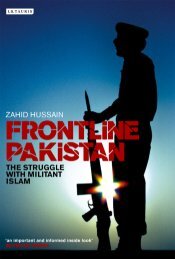Who Owns Pakistan - Yimg
Who Owns Pakistan - Yimg
Who Owns Pakistan - Yimg
You also want an ePaper? Increase the reach of your titles
YUMPU automatically turns print PDFs into web optimized ePapers that Google loves.
"activity of public sector prevents the concentration of economic<br />
power in few hands and protects the small and medium<br />
entrepreneurs from the clutches of giant enterprises and vested<br />
interests".<br />
Althouth the PPP manifesto have never considered the possibility of nationalizing<br />
cotton, ginning, rice husking and flour mills, on July 1, 1976 government<br />
nationaized 2815 cotton, ginning and rice husking units, creating administerative<br />
nightmare and wide spread public resentment. The move was justified by the<br />
need to eliminate middle men. It was said that the producer as well as<br />
consumers of cotton, rice and wheat had been at the mercy of middle men<br />
trading in the milling of these commodities, with the result that producers were<br />
deprived of due share and consumer got poor quality and adulterated<br />
commodities at much higher prices.<br />
Another important step taken by Bhutto to discipline the corporate sector to start<br />
work on new company law and test was assigned to Rahim jan, a Chartered<br />
Accountant from Lahore. By the time Z A Bhutto was ousted in July 1977 the<br />
draft of the company law was ready but Zia appointed a commettee headed by<br />
Irtaza Husain to study the law which was promulgated only in 1984.<br />
When Bhutto called elections in 1977 he had built a strong and sizeable public<br />
sector with priority on cement, steel and fertilisers. It was on account of the great<br />
importance attached to the fertiliser sector that Bhutto called upon a private<br />
sector entrepreneur, Syed Babar Ali of Packages Ltd. to head National Fertilizer<br />
Corporation (NFC). The NFC was a little more than a name when he assumed its<br />
control but within a year he launched work on three new plants, i.e Pak-Arab<br />
Fertilizer at Multan, Pak-Saudi Fertilizer at Mirpur Mithelo and Hazara Fertilizer<br />
Complex at Haripur in the NWFP. It was also during the same period that work<br />
started on Fauji Fertilizer at Got Machi, Rahim Yar Khan in Southern Punjab.<br />
Not a single Fertilizer factory has been set up in post-Bhutto era but the projects<br />
launched by his government were enough to meet the requirements for more<br />
than a decade. Even today the fertilizer projects sanctioned by Zia continue to<br />
face official procrastination because of strong importers lobby. A detailed report<br />
about lobbies working against the phosphate fertilizer projects sanctioned during<br />
Zia's era appeared in the daily, Business Recorder of Feb 4, 1994.<br />
According to the report, these phoshate fertilizer projects namely Al-Noor<br />
Fertilizer, Fauji-Jordan Fertilizer and Pak-Gul were approved in 1983 but failed to<br />
make headway for want of protection against dumping. " Should the country<br />
become self-sufficient or remain at the mercy of industrial giants was the main<br />
question?" the report asked.<br />
During Bhutto's era, work started on the much-cherished <strong>Pakistan</strong> Steel Mills, the<br />
Heavy Foundary and Forge and several cement factories like D G Khan Cement,<br />
18













